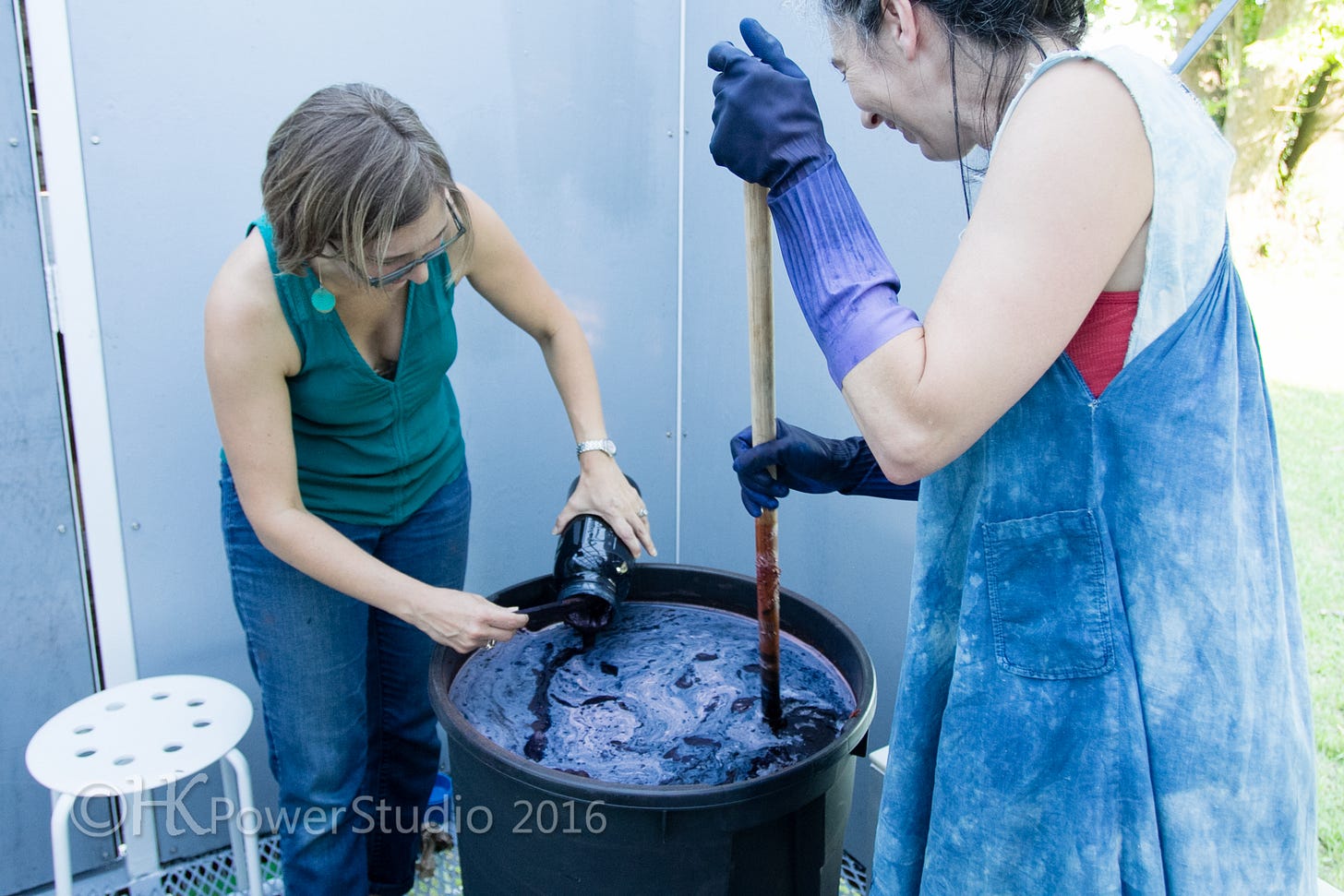A Community of Lowcountry Indigo Op-Ed, Part Two
Since my last post, I’ve continued engaging, thoughtful, and meaningful conversations about indigo in the Lowcountry with people in our community of practice (COP).
In my research, I’ve come across a few more publications I will include, as follows:
2010 & 2013 Charleston Magazine articles
2011 Blue Alchemy: Stories of Indigo is a film by Mary Lance. It tells the story of indigo's global history, present-day use, and resurgence.
2013 Andrea Feeser from UGA published her book Red, White, and Black Make Blue: Indigo in the Fabric of Colonial South Carolina Life.
2022 The Grist
I first learned about the community of practice theory in graduate school. At that time, I argued (with one professor in particular) that those of us working with indigo (in the Lowcountry, the USA, and Globally) are involved in a community of practice. By definition, we have a common purpose (to learn about growing, harvesting, processing, and dyeing with indigo), share ideas, learn from and with one another, and are interdependent.
Individuals willing to share, learn together, and support one another choose to be part of a community. However, not every individual who works with Indigo falls into this category. Some are more independent and don’t necessarily need or want to be involved in this community. Additional characteristics of a COP are below.
What does COP have to do with indigo? Perhaps I digress into academics, but I have a working theory that those of us who work collaboratively, as above, fall somewhere on this spectrum within a COP.
Community makes us stronger advocates for overcoming challenges and finding belonging through relationships. This series highlights aspects of the community integral to Indigo's ‘revival.’
The community behind the indigo ‘revival’ in the Lowcountry has barely been covered in the decade of indigo media coverage presented in my previous post. Most articles focused on select farmers or artists working with indigo; supporting them is a beautiful outcome. Yet, there was no mention of how people learn together about indigo.
Little attention is given to how and why this revival is happening.
How has an indigo revival happened?

Over the past decade, our community has expanded, shared challenges, asked tough questions (together), and become more sophisticated (in communication, techniques, and education). All of this requires patience and flexibility, support and encouragement. None of the progress made in expanding the market potential for growing and processing indigo has been made possible by one or two individuals. Yet, individuals willing to do this work in collaboration reap the benefit (as do those who do not contribute, but I digress).
This is not a revival driven by economic factors or market demand. It’s a revival driven by people who see a need and opportunity to find more sustainable, safe, and thoughtful ways to express their creativity. It is driven by people willing to reflect on past successes and failures while committing to better standards for the well-being of people who work with and use indigo on their farms, studios, and clothing.
Collectively, we (who work with indigo in the Lowcountry) have created an indigo revival! It’s been over a decade, but sometimes it feels like we are just getting started.
Why does an indigo revival matter? There is not one reason; there are many.
Some people work with indigo through their artistic practice. Some want to replace toxic and unsustainable dyes with safer solutions for the fashion and fiber industry. Some are interested in the scientific and agricultural potential indigo has. Some want to connect with their ancestral roots through a crop directly linked to their cultural diaspora. Some see it as a calling or a means of healing (the land, history, and people).
No matter why someone comes to work with Indigo, conversations naturally land on all of these topics. All of these conversations are meaningful and solution-oriented, and some of them are very hard. The most challenging conversations ask us to reflect on the pain that white colonists inflicted on enslaved Black people, who were forced to share their intellectual property and their bodies.
Those working with Indigo in the Southeast United States seem more inclined to have these conversations. Not everyone who works with Indgio does, but for some, there is the potential for a deeper connection and understanding of one another. Being in a community with individuals willing to be vulnerable, learn, problem-solve, and support one another is a gift.
In my next post, I plan to examine how the media has portrayed individuals in the “indigo community” in the Lowcountry.




